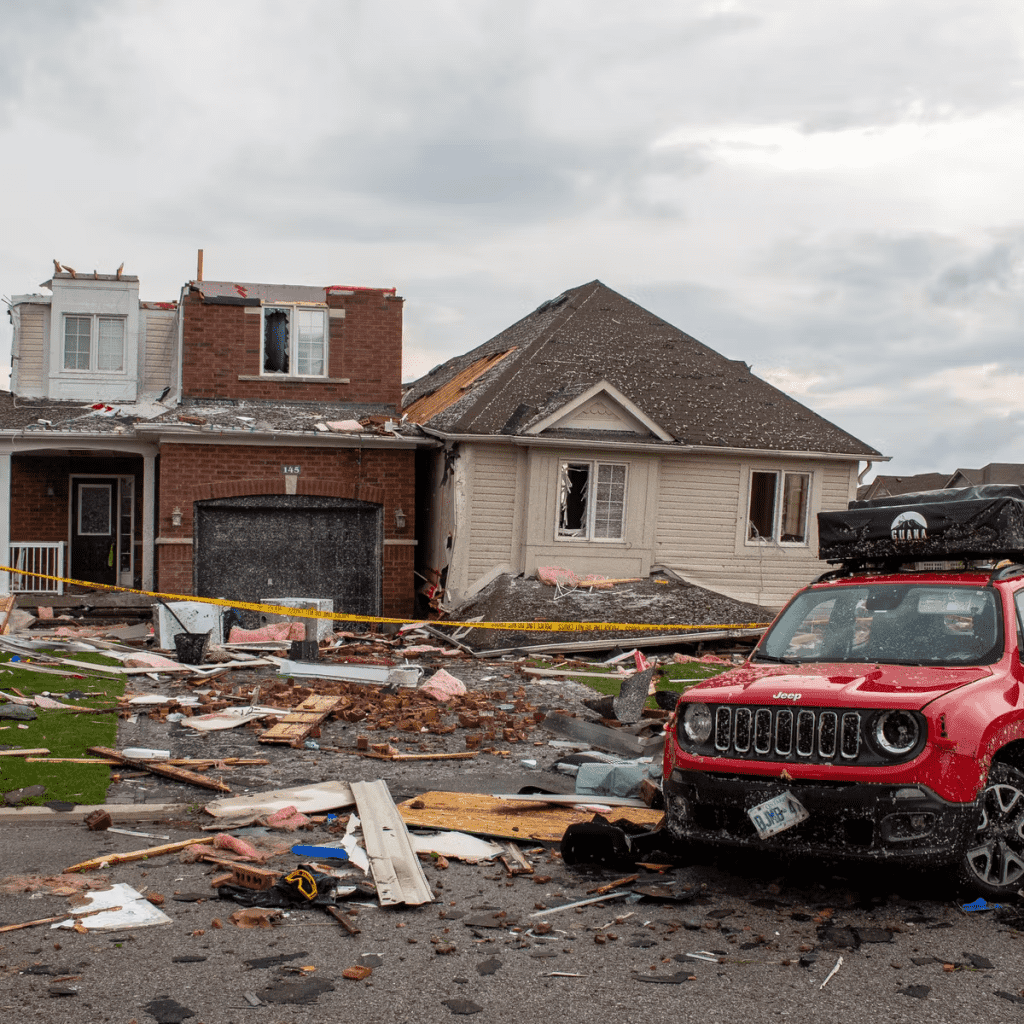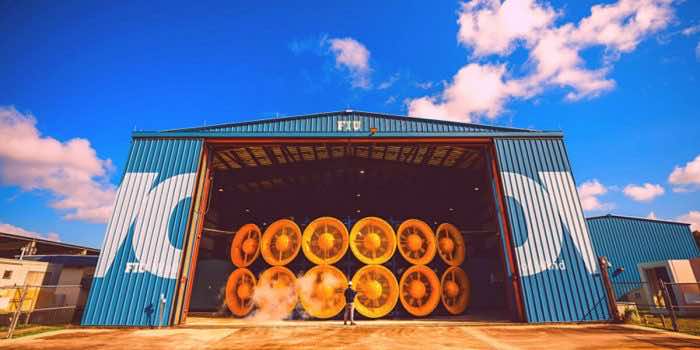The sudden change in climatic conditions due to the rise in temperatures throughout the world presents the long-term challenge of adverse weather patterns. The impact of this atmospheric turmoil can be seen in the form of strong winds, the melting of glaciers, and extremes in temperatures. Taking these things into consideration, engineers at the Florida International University in Miami are producing the winds of category 5 to see the penetration power of test structures. The incredible “Wall of Wind” is what gets this job done.

After the experiments, these research scientists would come to know the withstanding ability of these structures, which would in turn open the doors for further research. As can be seen in the picture above, a total of 12 hinged and towering fans have been put together in a curved shape, which when come to power can embrace the structures with their exhilarating winds of 160 mph.
On the opposite side of this gigantic wall, there are test structures placed, and after the execution of the process, engineers can see the devastating effect of this wind on these structures and will figure out the vulnerability in return, along with the calculation of the distance that the falling debris covers.
We have seen a lot of examples when such disastrous winds from nature caused havoc and ruined buildings. A lot of us might have experienced Hurricane Andrew, which was a very powerful wind of Category 5 and hit South Florida in 1992. Coupled with this, cosmic scientists have warned of destructive hurricanes that have a probability of hitting Earth in 2022 owing to the detrimental climate conditions.
Such high category winds first hit the weakest part of the building, like the roof, and split it from the middle in less than a second. As soon as one building comes down, the other structures standing in the vicinity become vulnerable to the effects of falling debris. Research has shown that the intense yet uninterrupted winds of 130-140 mph have the potential of collapsing the nearby buildings within no time.

One method that engineers have discovered is to make horizontal wind turbines along the edges of the roof to make them undo the effect of the strongest wind vortices. It is also recommended that the roofs should be designed in such a round shape or in a trapezoidal way that it will reduce the wind pressure on the structures rather than constructing buildings with sharp corners.
This is the underlying reason for building a test facility against 200 mph winds in order to come up with the correct estimates of what the real-life situation would look like and, so, make efforts to mitigate the effects of these hurricanes in the future.



